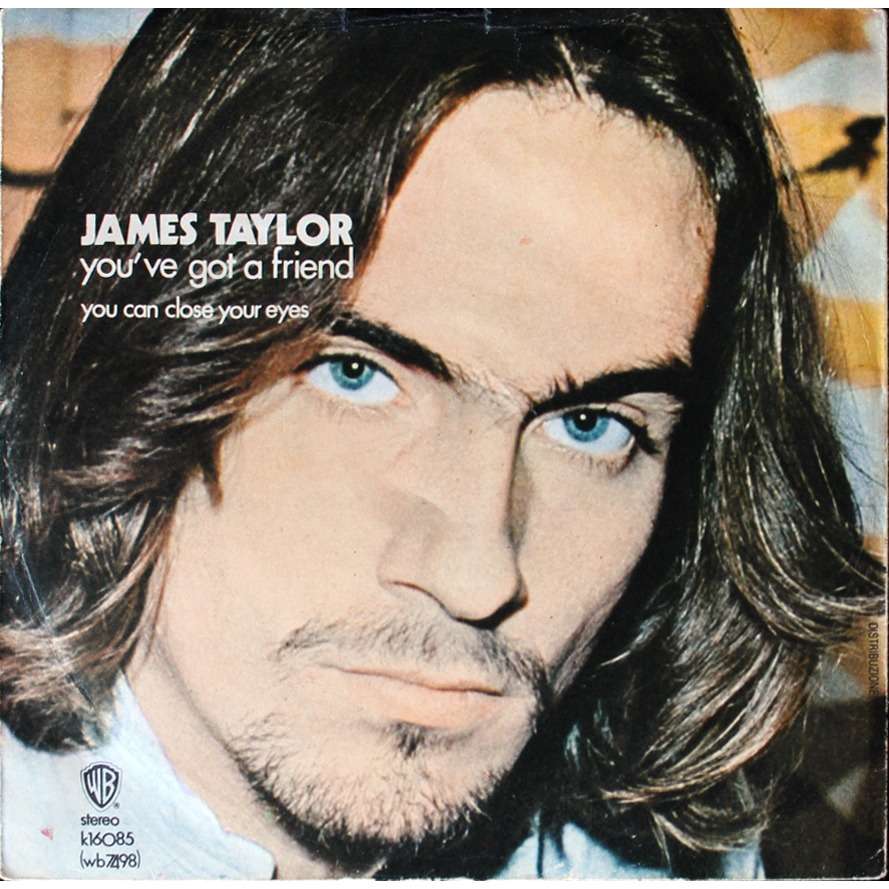 | You’ve Got a FriendJames Taylor |
Writer(s): Carole King (see lyrics here) First Charted: May 29, 1971 Peak: 11 US, 11 CB, 2 HR, 11 AC, 1 CL, 4 UK, 2 CN, 25 AU, 1 DF (Click for codes to charts.) Sales (in millions): 1.0 US, -- UK, 1.0 world (includes US + UK) Airplay/Streaming (in millions): -- radio, 39.1 video, 167.92 streaming |
Awards (James Taylor):Click on award for more details. Awards (Carole King):Click on award for more details. |
About the Song:Carole King wrote “You’ve Got a Friend” during sessions for her Tapestry album as well as James Taylor’s Mud Slide Slim and the Blue Horizon in January 1971. Taylor, Joni Mitchell, and Danny Kortchmar play on both versions. Kortchmar and Taylor had been friends since they were kids and Taylor and King were long-time friends as well. FB In April 1971, King released the double-A side single “It’s Too Late”/ “I Feel the Earth Move” to promote the Tapestry album. It went to #1 in June 1971 for five weeks and was knocked from the top by Paul Revere & the Raiders’ “Indian Reservation.” After one week at the pinnacle, that song succumbed to Taylor’s version of “You’ve Got a Friend.” King said “the song was as close to pure inspiration as I’ve ever experienced. The song wrote itself. It was written by something outside myself, through me.” WK Taylor said King wrote the song in response to his line “I’ve seen lonely times when I could not find a friend” in his song “Fire and Rain.” WK She didn’t, however, write it with the intent of him or anyone else specifically recording it. However, she said “when James heard it he really liked it and wanted to record it.” WK Taylor has said the song had particular resonance for him because he had recovered from depression shortly before hearing the song. WK When King’s version was released on the Tapestry album, Rolling Stone critic Jon Landau called it her “most perfect new song.” WK Author James D. Perone describe its themes as “a universal, sister/brotherly, agape-type love of one human being for another.” WK The song won Grammys for Song of the Year and Best Pop Male Vocal Performance. Resources:
Related Links:First posted 3/16/2021; last updated 9/14/2023. |










